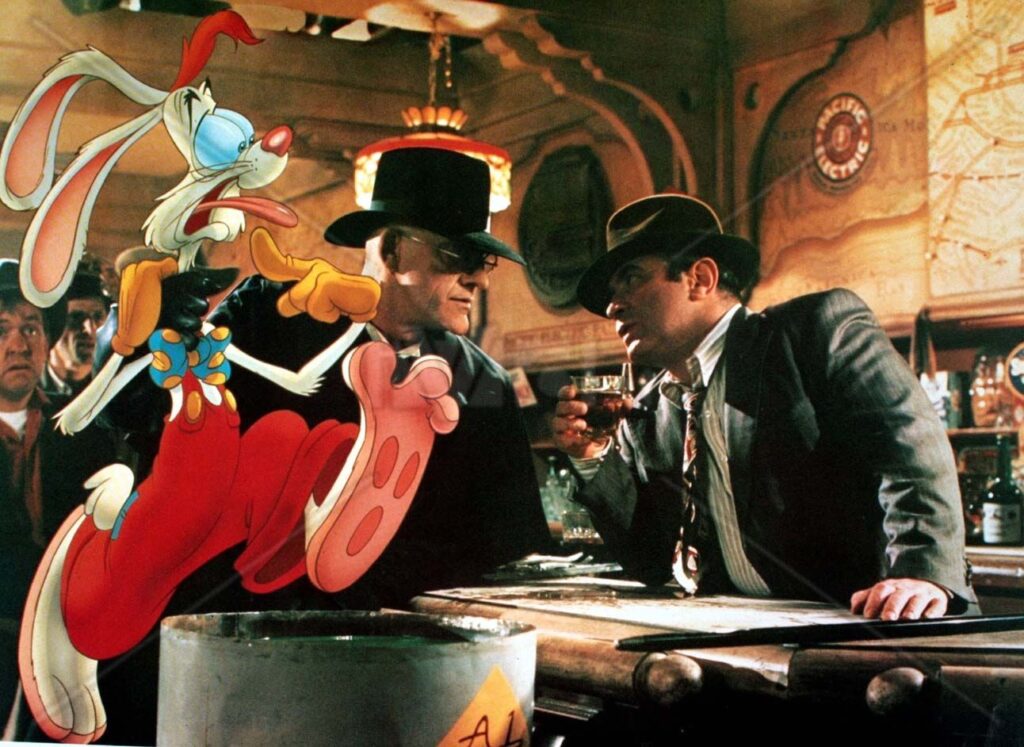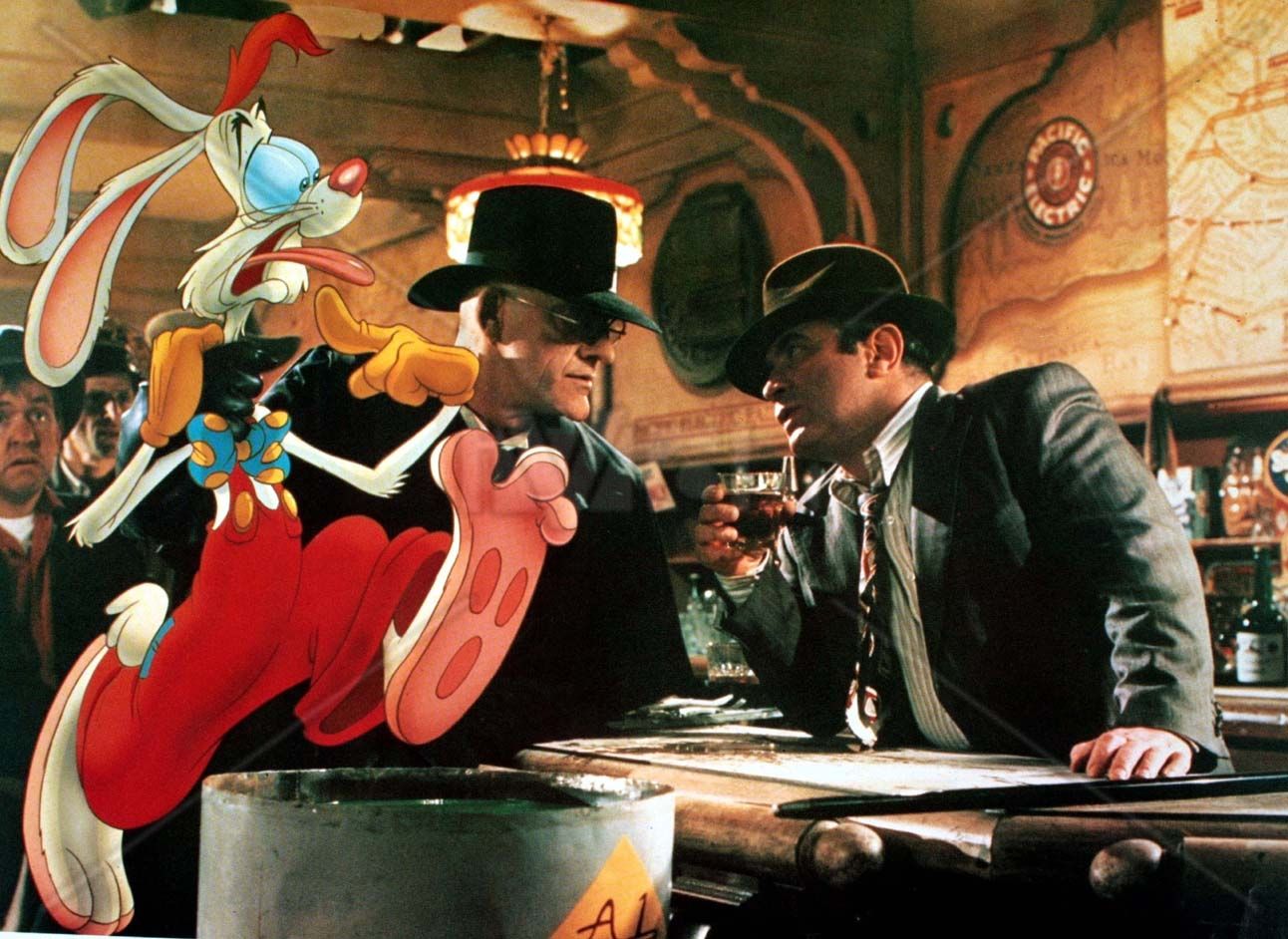
Judge Doom: Unpacking the Villainy of Who Framed Roger Rabbit
Who Framed Roger Rabbit, a 1988 cinematic masterpiece, seamlessly blended live-action and animation, captivating audiences worldwide. At the heart of its compelling narrative lies one of cinema’s most unforgettable villains: Judge Doom. Played with chilling precision by Christopher Lloyd, Judge Doom isn’t just a cartoon antagonist; he’s a symbol of corporate greed, ruthless ambition, and a terrifying disregard for life, both Toon and human. This article delves into the character of Judge Doom, examining his motivations, methods, and lasting impact on cinematic villainy.
The Architect of Toontown’s Destruction
Judge Doom serves as the primary antagonist in Who Framed Roger Rabbit. He is presented as the stern and unyielding judge of Toontown, appointed by Cloverleaf Industries to maintain order and prosecute Toons who break the law. However, beneath his seemingly lawful exterior lies a sinister plot to destroy Toontown and replace it with a freeway. This ambition stems from Judge Doom’s belief that Toontown is a chaotic and unproductive place, hindering the progress of the city.
He’s not just a bad guy; he’s a *corporate* bad guy. His plan isn’t about personal gain in the traditional sense (though power clearly motivates him), but about implementing a vision of urban planning that prioritizes efficiency and profit over community and joy. This makes Judge Doom a particularly relevant villain in a world increasingly shaped by corporate interests.
The Diabolical Dip
One of the most terrifying aspects of Judge Doom is his invention: Dip. This toxic substance, a mixture of turpentine, acetone, and benzene, is the only known way to kill a Toon. Judge Doom uses Dip without hesitation, demonstrating his complete lack of empathy for the Toon community. The Dip scene, where he mercilessly executes a sentient shoe, remains one of the most disturbing moments in family-friendly cinema. It highlights the lengths to which Judge Doom is willing to go to achieve his goals, solidifying his status as a truly evil character.
The Dip itself is a powerful metaphor. It represents the destructive power of unchecked industrialization and the willingness of some to sacrifice anything – even the lives of others – for progress. The fact that it’s the *only* thing that can kill a Toon underscores the vulnerability of the Toons and the immense power wielded by Judge Doom.
The Revelation: A Toon in Disguise
The film’s climax reveals a shocking truth: Judge Doom is not human at all. He is, in fact, a Toon himself – the Toon who murdered Eddie Valiant’s brother years prior. This revelation adds another layer to his villainy. The hypocrisy of a Toon seeking to eradicate his own kind is staggering. He’s not just a prejudiced outsider; he’s a traitor to his own community. The unveiling scene, where he is doused in Dip and reverts to his true form, is a visual spectacle and a satisfying moment of justice.
The fact that Judge Doom is a Toon adds a layer of psychological complexity to his character. Why would a Toon want to destroy Toontown? Perhaps he represents the self-loathing and internalized prejudice that can arise within marginalized communities. Maybe he believes that by eliminating Toontown, he can escape his own Toon identity and assimilate into the human world. Whatever his reasons, the revelation makes him a far more compelling and disturbing villain.
Christopher Lloyd’s Masterful Performance
Christopher Lloyd’s portrayal of Judge Doom is nothing short of iconic. He perfectly captures the character’s cold, calculating demeanor and his unwavering commitment to his evil plan. Lloyd’s performance is subtle yet menacing, making Judge Doom a truly unforgettable villain. His ability to seamlessly interact with both live-action and animated characters is a testament to his talent and the film’s groundbreaking special effects. Lloyd’s performance is a masterclass in villainy, setting a high bar for future actors playing similar roles. The way he delivers lines like “Remember me, Eddie? When I killed your brother, I talked… just… like… THIS!” sends shivers down the spine, even after multiple viewings.
Judge Doom’s Enduring Legacy
Judge Doom‘s impact on cinema extends beyond Who Framed Roger Rabbit. He has become a benchmark for villainous characters, particularly those who operate under the guise of authority and order. His blend of corporate ambition, ruthless violence, and hidden identity makes him a complex and memorable antagonist. Judge Doom serves as a cautionary tale about the dangers of unchecked power and the importance of protecting vulnerable communities. His influence can be seen in numerous subsequent films and television shows, solidifying his place in the pantheon of great cinematic villains.
Judge Doom: A Symbol of Corporate Greed
As mentioned earlier, Judge Doom represents more than just a simple villain. He embodies the destructive potential of unchecked corporate greed. His desire to replace Toontown with a freeway reflects the prioritization of profit over people and the environment. This theme resonates even more strongly today, as corporations continue to exert a powerful influence on our lives. Judge Doom serves as a reminder of the need to hold corporations accountable for their actions and to protect the interests of communities and the environment.
The Psychological Impact of Judge Doom
The character of Judge Doom is psychologically complex. His cold demeanor, unwavering commitment to his evil plan, and the shocking revelation of his Toon identity make him a fascinating subject of study. He can be interpreted as a representation of various psychological concepts, such as the shadow self, the dangers of repressed emotions, and the potential for self-destruction. Understanding the psychological dimensions of Judge Doom can provide valuable insights into the human condition.
Judge Doom’s Place in Film History
Who Framed Roger Rabbit is a landmark film in cinematic history, and Judge Doom is a key reason for its success. The film’s innovative blend of live-action and animation, its compelling story, and its memorable characters have made it a beloved classic. Judge Doom stands out as one of the most iconic villains in film history, his image forever etched in the collective memory of moviegoers. His enduring popularity is a testament to the power of well-developed characters and the importance of a compelling antagonist.
In conclusion, Judge Doom from Who Framed Roger Rabbit is a multifaceted villain whose motivations, methods, and enduring impact continue to fascinate audiences. His portrayal by Christopher Lloyd is masterful, and the character’s themes of corporate greed and the dangers of unchecked power remain relevant today. Judge Doom is more than just a cartoon villain; he is a symbol of the dark side of progress and a reminder of the importance of protecting vulnerable communities. His legacy as one of cinema’s greatest villains is well-deserved, ensuring he will continue to terrify and captivate audiences for generations to come. The complexities of Judge Doom are a testament to the film’s clever writing and enduring appeal. Even now, decades after its release, the character of Judge Doom continues to be discussed and analyzed, solidifying his place as a truly iconic villain. The impact of Judge Doom on the landscape of cinematic villains is undeniable. The presence of Judge Doom elevates the film from a simple cartoon caper to a thought-provoking commentary on society and power. The villainous acts of Judge Doom serve as a stark reminder of the potential for darkness within seemingly ordinary individuals. The character arc of Judge Doom, from seemingly lawful judge to revealed Toon murderer, is a masterclass in villainous storytelling. The chilling presence of Judge Doom is a major reason why Who Framed Roger Rabbit remains a beloved and influential film.
[See also: Christopher Lloyd’s Best Roles]
[See also: The Making of Who Framed Roger Rabbit]
[See also: Top 10 Movie Villains of All Time]

